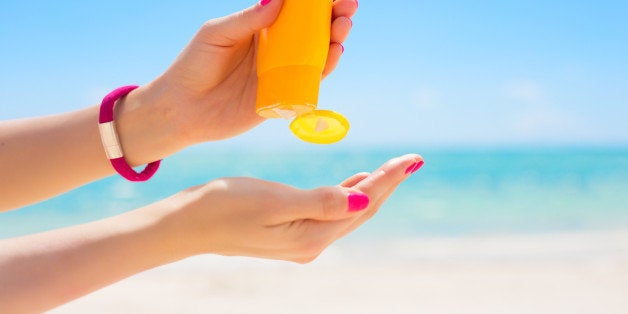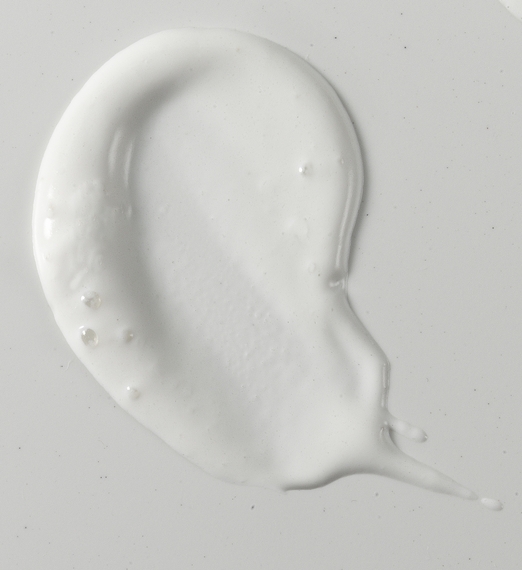
For Teen Vogue, by Emma Sarran Webster.
It makes sense in theory: If you're super pale and you burn easily, you should use the highest SPF you can find when you go out in the sun, right? Not necessarily. The reality of what various SPFs offer in the way of protection -- and which ones you should be using -- is a bit more complicated than that.
Sunscreens can offer protection from two types of ultraviolet (UV) rays: UVB, which according to the Skin Cancer Foundation, are the chief cause of sunburn and play a key role in the development of skin cancer, and UVA, which penetrate the skin more deeply and are largely responsible for skin aging and wrinkling, as well as skin cancer risk. The SPF measurement on sunscreens refers specifically to the UVB protection level -- and the number may not mean what you think it does. SPF 15 doesn't protect you from 15% of UVB rays, just as SPF 100 doesn't protect you from 100% of the rays. In fact, as you get into the higher numbered SPF sunscreens (think: 50 and above), the difference in UVB protection is actually pretty minimal. "The relationship is not a linear thing," dermatologist Dr. Mona Gohara, MD, a member of the American Academy of Dermatology tells Teen Vogue. "For example, [SPF] 15 isn't blocking out half of 30." Rather, as Dr. Gohara explains, SPF 15 blocks about 93% of UVB rays, SPF 30 blocks about 95%, SPF 50 blocks about 97%, and SPF 100 blocks about 99%.
That said, though the UVA protection isn't technically represented by the SPF number on a sunscreen bottle. Steven Q. Wang, MD, a dermatologist and spokesperson for the Skin Cancer Foundation, tells Teen Vogue that the difference in UVA protection between a broad-spectrum (which represents both UVB and UVA protection) SPF 50 and an SPF 100 sunscreen, for example, may be significant enough to make the increase worthwhile. "If you're looking at SPF 50 versus 100, the...incremental benefit [of the higher one] is small, but the UVA protection may be much higher," he says.
So, theoretically, though the increase in UVB protection with a super-high SPF sunscreen may be negligible, it may help, and certainly can't hurt, to use it -- that is, as long as you do so correctly. "The only downside [of using a higher SPF] is if you're lulling yourself into a sense of false security," Dr. Gohara says.
Indeed, as Dr. Wang also pointed out, when people opt for increased SPFs, they may actually feel so protected by the product that they ultimately neglect proper sun protection. "When people use really high SPF products, they tend not to reapply, they tend to stay out in the sun much longer, and they don't use other protective modalities such as clothing and hats," he says. Regardless of any increase in protection that a high SPF may or may not offer, one thing is certain: It doesn't give your body a free pass from sunburns, aging, or cancers, and it doesn't protect you from those things for any greater length of time than the lower SPF options. Both Dr. Wang and Dr. Gohara emphasized that, no matter what the SPF, it's crucial to reapply your sunscreen every two hours.
Which brings us to what is potentially the most important factor of the SPF conversation: Human error. True, an SPF 30 sunscreen technically blocks about 95% of UVB rays, but that's only when it's used correctly -- and it's usually not. "Most people don't use enough sunscreen, so the real SPF protection they're getting is about one third of the labeled SPF," Dr. Wang says. "So, if you have a product that says [SPF] 60, you're really getting an SPF of maybe 20 or 30." Though there's plenty of available information on how to properly apply sunscreen -- including instructions on the bottles themselves -- most of us simply don't lather on as much product as is used in testing and labeling SPFs. On top of that, we miss spots, we forget to reapply, we go in the water too soon, and we don't compensate for these errors with supplemental protection like hats and umbrellas.
So what does this all mean for your next trip down the sunscreen aisle? It boils down to this: The most important thing is to use a broad-spectrum sunscreen of at least SPF 30 -- and to use it often and properly. But, given the fact that none of us is perfect (and certainly not when it comes to applying sunscreen), it just may be worth it to bump that SPF up a notch or two to help make up for that inevitable human error. Just remember that when you do, the only difference in your routine should be putting that higher SPF product in your shopping cart. From there on out, it's (vigilant and careful sunscreen) business as usual.
More from Teen Vogue:
More Than Half of What You Eat Isn't Even Real Food, Study Finds

